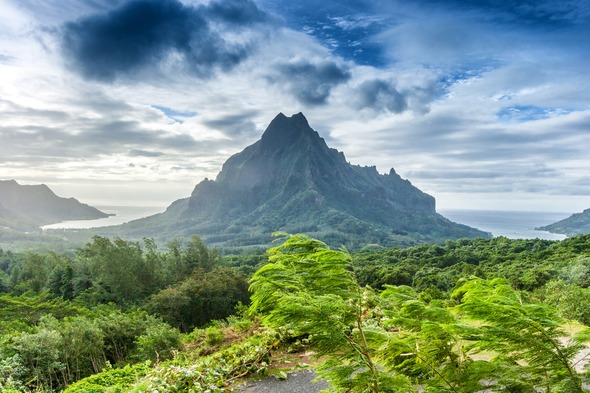The region's welcoming people, with their distinctive cultures and rich traditions, will overwhelm you with their hospitality - it is intriguing to explore the cultural bonds that link them, as well as the ways in which they differ.
Oceania's biodiversity is astonishing. This complex region features unique ecosystems and species, both above and beneath the warm tropical waters. Explore Micronesia and Melanesia, including Fiji, the Solomon Islands and Vanuatu; hop between the emerald isles of Polynesia, from the remote Marquesas, last resting place of Paul Gauguin, to the lush islands of Samoa. And for the more adventurous, set a course eastwards towards Pitcairn, Easter Island and Robinson Crusoe Island, before making landfall in South America.

When to visit the South Pacific
This is a year-round destination with balmy conditions and average temperatures in the 80s, but there are some seasonal differences. The summer months of December to March are more humid, with sporadic showers (typically late-afternoon and overnight) and plenty of sunshine, but the South Pacific is subject to seasonal cyclones, and this is the time of year when they may occur. The winter months of May to November are clear and dry.

Which itinerary to choose
If you are a first time visitor to the South Pacific, it is reasonable to choose simply on the basis of how easy the access is, or whether the dates suit you. Returning visitors will be interested to explore different island groups, and learn about the cultural differences and contrasts. Melanesia includes the mountainous island nations of the Western Pacific - Papua New Guinea, the Solomon Islands, New Caledonia, Vanuatu and Fiji.
Polynesia, a triangle of ocean formed by Hawaii, Easter Island and New Zealand, represents an astonishing one-fifth of the earth's surface. Here you will find American Samoa, Samoa, Tonga, the Cook Islands and French Polynesia. French Polynesia consists of five archipelagos: the hugely popular Society Islands, which include Tahiti, Mo'orea, Bora Bora and Huahine, along with the Austral islands, Tuamotus, Gambier islands and the far-flung Marquesas. Micronesia, north of the equator, consists of eight nation states including Yap, Chuuk, Palau and the Marshall Islands.

How to get to the South Pacific
You can go in either direction, via North America or the Far East. Westbound, fly to Los Angeles and on from there to Papeete, Fiji or Auckland. Eastbound, use an Asian gateway or fly on to Australia for easier local hops. Depending on where your expedition embarks, there may be a specific charter flight to join.

The wildlife of the South Pacific
The profusion, diversity and visual wonder of the South Pacific's wildlife is amazing, but as you would imagine, the focus is mainly in the air and beneath the sea. Look out for tropical seabirds including sulphur-crested cockatoos, beach kingfishers, honeyeaters and the extraordinary red bird of paradise, plus megapodes, strange little birds that make huge nests of rotting vegetation that incubate eggs by the heat of decomposition, and lorikeets, cuckoos, cockatoos, harpy eagles, golden monarchs, dwarf cassowaries, ospreys, kites and imperial doves.
Marine life includes sponges, pygmy seahorses, sea whips, corals of all kinds, garden eels, and small caves with abundant clams; the stingless jellyfish of Palau, or the giant rays of Micronesia; brilliantly-hued reef fish, sea turtles, and playful clownfish; plus spinner and bottlenose dolphins. The Blue Corner is one of the top shark dives in the world, where you'll find dozens to hundreds of docile reef sharks.

Extending your stay in the South Pacific
Your journey is going to be long, so we would always recommend breaking it en route, and we have plenty ideas about where you might do that, and what to do when you are there. It all depends on the itinerary you have chosen, and your personal interests and preferences. Give us a call today on 020 7399 7630 - we are here to talk things through and come up with the perfect South Pacific holiday, tailor made especially for you.







